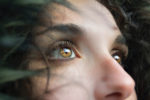Good vision contributes to general well-being at any age. Good eyesight is essential for performing activities of daily living.
Contact lenses are an excellent choice for those who need vision correction and do not want to wear glasses full-time or undergo laser surgery. There are different types of contact lenses on the market.
How do you choose the right type of lenses to make sure they fit your eyes and meet your needs?
Types of contact lenses
Soft contact lenses
Soft contact lenses are the most commonly prescribed lenses. They are made of soft plastic. Combined with water, they allow the circulation of oxygen through the lens to the cornea. This exchange provides comfort and maintains eye health.
Soft lenses are mainly used to correct various visual defectsincluding : Myopia, hyperopia, astigmatism andastigmatism and presbyopia (the loss of near vision due to age).
Soft lenses are larger and more flexible than rigid lenses. They adapt to the cornea and are fixed by a suction effect, which avoids the risk of slipping. These lenses are particularly recommended for people with sensitive eyes or who practice sports.
Many lenses today are made from modern materials such as silicone hydrogels that bring more oxygen to your eyes.
There are different types of soft lenses, for example:
Daily disposable lenses
Daily lenses as the name suggests are worn for one day. You remove them and throw them away at night. Using a new pair of soft lenses every day means less risk of infection, less cleaning and more comfort.
The lenses bi-monthly
These lenses can be worn daily for 15 days and then replaced with a new pair. However, you must clean and disinfect them daily and store them overnight. Your optician will recommend the best cleaning products.
Monthly lenses
Monthly lenses are worn daily, cleaned and stored overnight for one month, then discarded.
Extended wear lenses
This type of soft contact lens is made from silicone hydrogel and can be worn for up to 30 days without interruption, even while sleeping.
Rigid contact lenses
Rigid lensesalso known as gas permeable lensesare made of hard plastic. They provide sharp, clear vision and correct most visual disorders. They are more durable than soft contact lenses. They are also more breathable, which provides more oxygen to the cornea.
Unlike soft lenses, the diameter of these lenses is much smaller and covers less of the eye.
It is important to remove, clean and disinfect these lenses at night, but some can be worn for a week or even 30 days.
Fitting to rigid lenses gas permeable lenses may take a few days or up to a few weeks. However, if your prescription does not change and you take good care of your lenses, you can use the same pair for two to three years.
Hybrid contact lenses
Hybrid contact lenses are the latest and most advanced option. A hybrid lens has a rigid central zone gas permeable surrounded by a soft skirt, offering the clear, crisp vision of a hard lens and the all-day comfort of a soft lens.
Hybrid contact lenses are easy to clean and disinfect, do not dehydrate, are easier to use and last longer than soft lenses. They can be used to correct myopia, hyperopia, astigmatism and age-related loss of near vision, as well as irregular corneal curvature (keratoconus).
Colored contact lenses

Colored contact lenses allow you to change your eye color and get the look you want. These lenses are available in two forms:
Colored contact lenses on prescription
They correct vision problems such as nearsightedness, farsightedness or astigmatism, and improve or completely change the color of your eyes.
Cosmetic contact lenses
Cosmetic contact lenses are only used to change the color and appearance of the eyes and have no lens power for vision correction.
Multifocal contact lenses
The multifocal contact lenses (including bifocal lenses) contain different power zones for near and distance vision to correct presbyopia as well as myopia or hyperopia. Some multifocal lenses can also correct astigmatism.
Scleral contact lenses
These rigid lenses gas permeable are larger than most, and extend to the white outer layer of the eyeball (sclera). They are specially designed to treat keratoconus and other corneal irregularities, as well as presbyopia.
Ready to see the world with new eyes? It’s time to try contact lenses!
The optometrists at Lindegger optique offer you a contact lens test and help you choose the best contact lenses for your vision, comfort and lifestyle.
Book your appointment and find out which contact lens is right for you!





